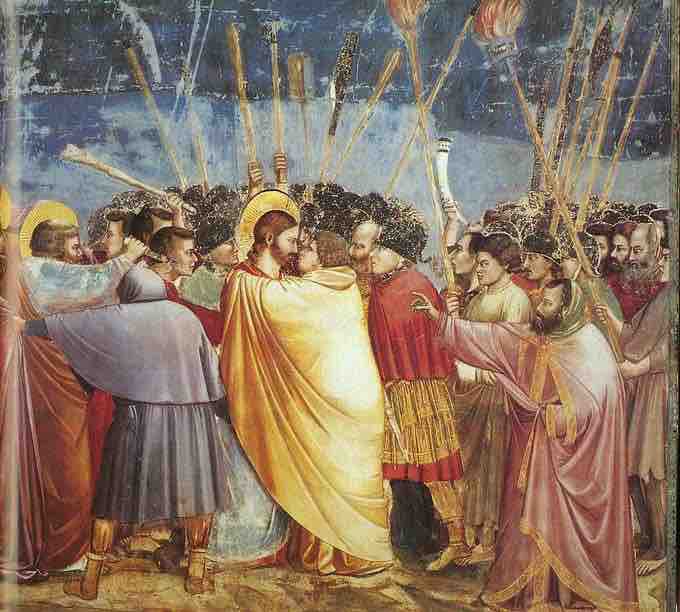Giotto
Giotto di Bondone was born during the late 1200s in the Florence region of Italy. He would go on to become one of the most revered painters of his time, and an important bridge between the medieval and renaissance periods.
The Arena Chapel frescoes were commissioned by the patron Enrico Scrovegni and depict scenes from the life of the Virgin Mary and Jesus. They are Giotto's best known masterpieces.

Kiss of Judas
One of the most dramatic scenes from Giotto's Arena Chapel frescoes depicts the moment Judas betrays Christ by identifying him to Roman soldiers.
Scholars debate over which works should be attributed to Giotto and which works should be attributed to assistants or other artists. For example, Giotto appears to have apprenticed with the Florentine painter Cimabue in Rome and may have been responsible for portions of the Chapel at Assisi. However, there is no documentation to confirm his work in Assisi.
Giotto's distinct contribution to the history of art was a return to a style that directly references the natural world, a style that had not been emphasized by Medieval or Byzantine painters. While Medieval and Byzantine styles favored flat, elongated figures and a lack of natural perspective Giotto returned painting to a style that aimed to capture the naturalism of the human form.
Another strength of Giotto's work was his storytelling ability. He was skilled at selecting strong interpretations of Biblical stories and at drawing viewers to the most visually and spiritually rich aspects of the story. This focus on relationships between figures, as well as a renewed interest in perspective and life drawing, are some of the aspects that would become prominent in Renaissance painting.